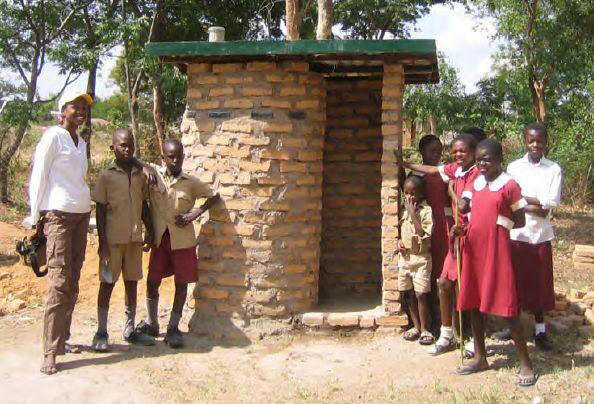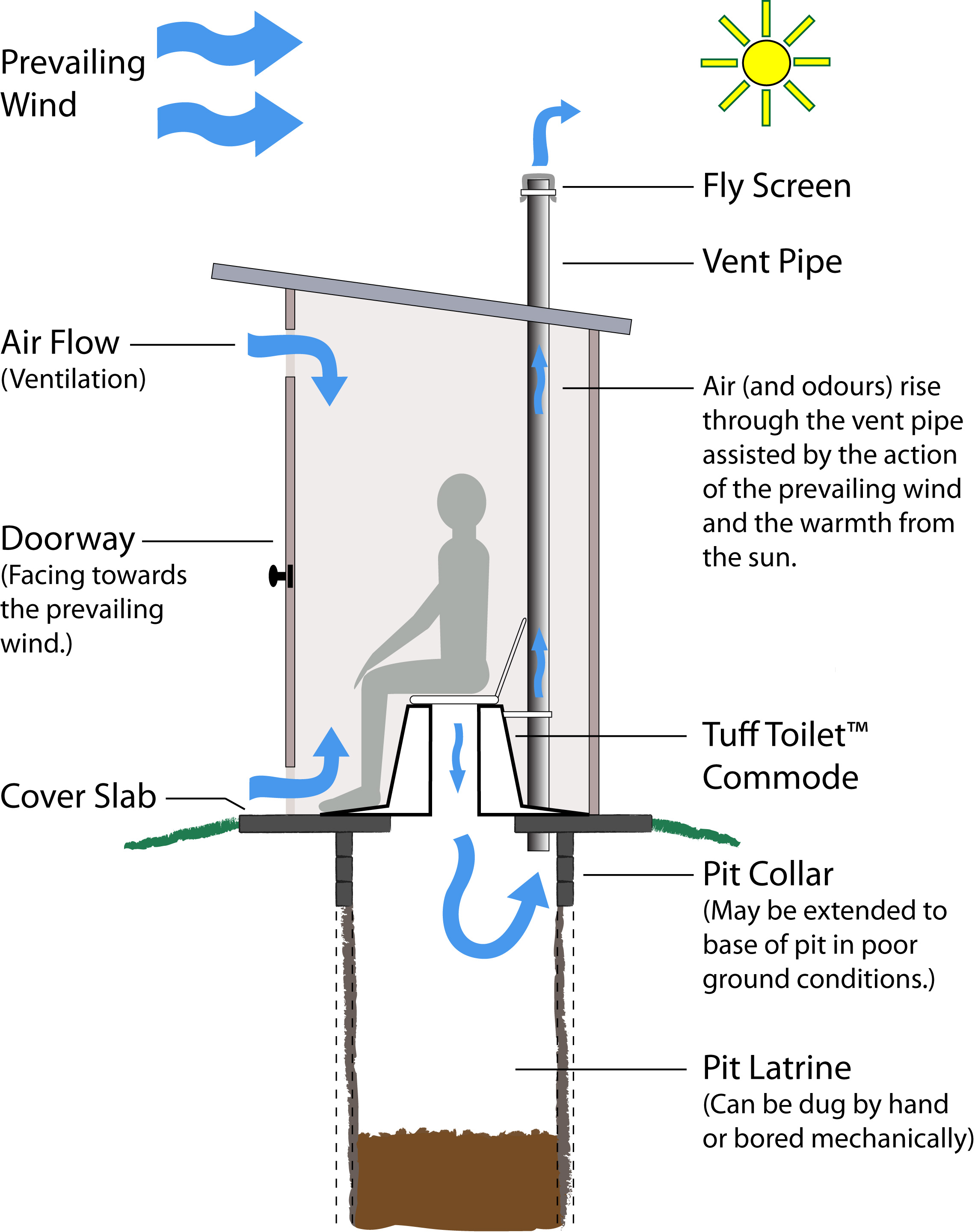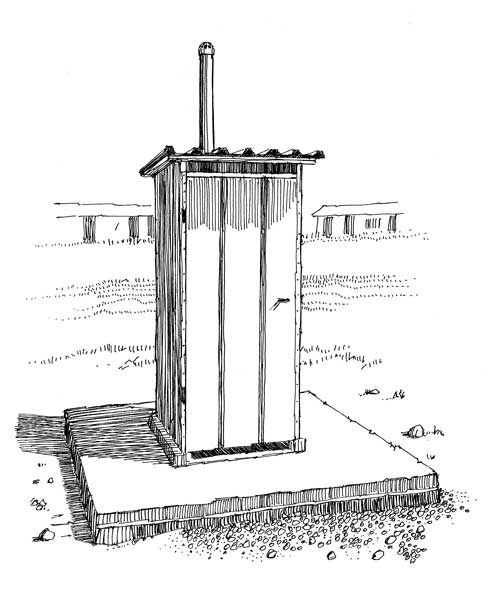| VIP - How it works |
|
VIP refers to the 'Ventilated Improved Pit' toilet
system design, which incorporates features to enhance sanitation and health aspects of pit
toilets. These features are promoted naturally (by wind,
sunlight and natural decomposition processes). |
|
The VIP system produces a continuous airflow
through the ventilation pipe. The airflow vents away odours,
assists waste breakdown by drying action, and acts as a very
effective fly control mechanism. Despite their
simplicity, well-designed VIPs can be completely smell free, and
be more pleasant to use than some other water-based technologies. |
|
Excreta deposited into the pit undergo complex
chemical and biological reactions which eventually lead to
innocuous humus like solids. During this process the pit contents
continually reduce in volume, and relatively small pits can have a
long service life or even last indefinitely. |
|
|
| History &
Origins |
|
The VIP
latrine was developed during the 1970s to improve public
health in developing countries through better water and
sanitation technology. |
|
Initially called the 'Blair Latrine', the
design can be credited to Peter Morgan of the Blair Research
Laboratory, part of the then Rhodesia Ministry of Health. |
|
The term VIP, an acronym of 'Ventilated
Improved Pit', originated with the World Bank, and the system has been universally called the
VIP ever since. |
|
 |
 |
|
Classic brick spiral design VIP toilet |
Bellatrines VIP public toilet in a National
Park |
|
at a school in
Zimbabwe |
in New Zealand
(disability access) |
|
|
There are many types of VIP toilet, from simple to
sophisticated (see pictures above) and the millions of VIP toilets
in service throughout the world today are testament to their
effectiveness. |
|
|
How it works (ventilation, vector control, breakdown
of waste, destruction of pathogens) |
 |
|
Continuous ventilation is achieved by air
movement (wind, breeze) across the top of the vent pipe
causing a venturi effect, and by sunlight
heating the vent pipe causing a convection effect. |
|
The ventilation of the pit removes odours,
but also ensures that any flies are attracted not to the
toilet but to the odours escaping from the top of the vent pipe, where the
wire mesh fly-screen prevents them from entering. Any
fly-hatch are trapped in the vent pipe as they escape
toward the light, ultimately dying and falling back into
the pit. |
|
Studies show 99% reduction of flies in fly
affected locations (Morgan 1977). Eliminating the primary vector
(flies) greatly reduces possibility of transmission of potential public health risks. |
|
Venting the pit dries the waste which
assists natural decomposition and destruction of potential
pathogens, ultimately rendering a safe humus-like waste product. |
|
Organic soil is preferred over mineral
soil, with un-lined soil pits contributing to the
break-down of the waste by introducing natural soil
micro-organisms. Soil micro-organisms also compete with
pathogens. Small amounts of organic soil can be added
periodically to lined pits for the purpose of
introducing soil micro-organisms. |
|
'Composting' will occur
naturally when a health micro-organism community is
present, but can be
further promoted by the addition of small amounts of
carbon in the form of dry organic
matter like sawdust (chemical free), straw or twigs.
Composting will increase pit temperature to some degree,
with any increase in temperature assisting with
destruction of pathogens. |
|
In populations where disease and parasite
infections are not common (i.e. developed country
populations like NZ) it will also be uncommon to find
parasites and pathogens present in fecal waste.
None-the-less it is important to treat the waste with
care, and allow the required time to pass for potential
pathogens to die before the waste can be regarded as safe. |
|
|
|
In temperate climates (varying between 4-20
degrees Celsius) most pathogenic bacterial will be
destroyed within 3-4 months (Winblad and Simpson-Hebert,
2004) but it is recommended by WHO (World Health
Organisation) to allow 12 months. Waste may then be safely
handled or used as fertiliser. |
|
Raising the pH (alkalinity) of the waste material
assists in destroying pathogens. A pH level of 9 for a period of
six months will destroy most pathogenic organisms. Periodic
addition of small amounts of wood ash will raise the pH level of
the waste. |
|
Any increase in temperature assists in destroying
pathogens. |
|
The most straight-forward type of VIP toilet uses a
single pit which is covered over when full and the toilet moved to
a new pit nearby. Alternatively, the toilet building straddles
twin adjacent pits, with the second pit used once the first pit
has become full. When the second pit finally becomes full (after
some years) the first pit will contain only stable and safe humus
material, and can be emptied for re-use. |
|
References |
|
|
|
 |